The Ministry of Defence has set out plans for the next stage of the Sting Ray Mid Life Upgrade, signalling the move from design work to demonstration and initial manufacture.
A procurement pipeline notice published by Defence Equipment and Support outlines a proposed contract worth up to £500 million, covering the Demonstration and Initial Manufacture phase of the programme.
The plan includes an option for full production to refurbish existing Sting Ray Mod 1 lightweight torpedoes to the new Mod 2 configuration.
The Sting Ray has been in Royal Navy service since 1983 and is carried by Merlin and Wildcat helicopters, as well as by Type 23 frigates through horizontal launchers. The existing Mod 1 variant travels through the water at up to 45 knots, tracking submarines via active and passive sonar before detonating a 45kg Torpex charge on impact.
According to the Ministry of Defence, the Mod 2 design will introduce new technological features and broader deployment options, ensuring the weapon remains effective against evolving undersea threats.
The plan follows a £60 million assessment phase contract awarded to BAE Systems in June 2024 to develop prototype weapons and conduct in-water trials. That phase focused on design work and early testing of the upgraded system. The new contract would run between July 2028 and June 2032, with a possible extension to 2035.
The Sting Ray upgrade is intended to sustain one of the UK’s core anti-submarine weapons for both the Royal Navy and Royal Air Force, which plans to integrate the torpedo on its Poseidon maritime patrol aircraft alongside the US-made Mk 54.
String Ray
The Sting Ray is a British-made lightweight anti-submarine torpedo that entered service in the early 1980s. It grew out of a 1960s effort to give the Royal Navy a homegrown alternative to American designs and was developed by GEC-Marconi, now part of BAE Systems. Weighing about 267 kilograms and just over 2.5 metres long, Sting Ray travels at up to 45 knots and can hit targets up to 11 kilometres away.
It uses active and passive sonar to track submarines and carries a 45-kilogram Torpex warhead. The torpedo can be launched from frigates, destroyers, and helicopters, as well as maritime patrol aircraft.


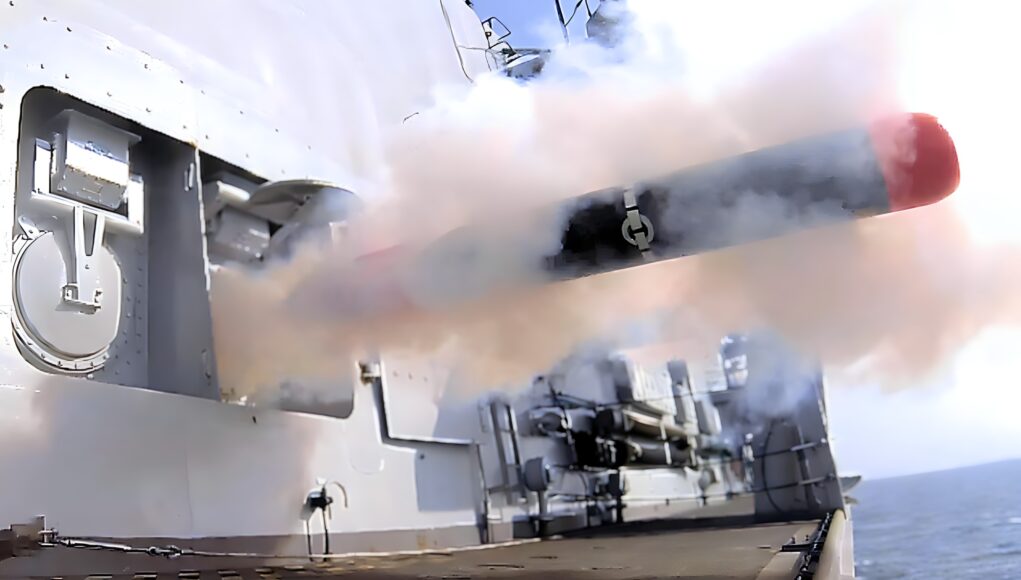
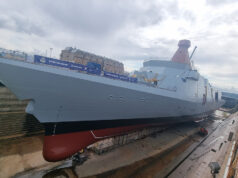
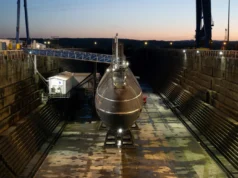

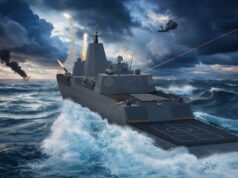
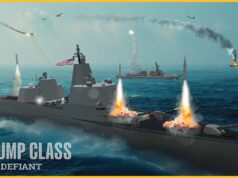
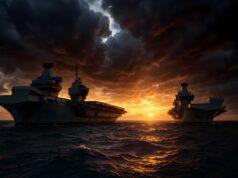
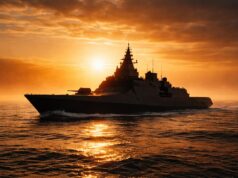



“Up to £500 million.”
Just for Demonstration and INITIAL manufacture phase.
Can someone explain to me why it costs so much? Beyond the MIC milking the taxpayer dry, again?
A third or more of that is UK tax.
Okay..good for the nations coffers, but not MoD’s. I never cease to be shocked at the prices quoted, and want to understand the why in case my objections are unfounded.
One of the problems from the supplier perspective is that there is a massive effort and cost in putting the company’s intellectual efforts into what is a quite speculative venture. The market for this product is quite small and controlled by the Government. You are being asked to provide an enhancement with absolutely no guarantee of business there after. The fact that the military is willing to cover the design costs probably with a resonable profit it promising however they will want a lower per unit cost when (and if) it comes to production.
Running a medium size business in the defence sector is expensive especially if you have good people. Any subcontractors will also be wanting a decent amount of money. Personally I thought 750m was a more reasonable price however the potential for foreign sales would probably have kept the price down.
Remember the cost of doing business with the public sector is large. Yes companies who eventually win contracts will recoup their costs. Some companies will never bother with the public sector for obvious reasons.
Thanks for all this, Mark.
Lots for me to ponder, and an area I admit I understand little.
Theres also the very smal number of people that the programming skills in the required languages and have security clearances. Inflation is running high, the government has clobbered business with tax increases and energy costs are high.
Ok do they want the work or not? We could always buy a torp from another manufacture… the US or Germany erc.
MIL spec testing for things such as shock & vibration and EMC is very very expensive. using MIL spec components such as IC’s and connectives, again very expensive.
Thank you.
That’s not to say there rip off’s not going on. Someone once commented to me that if the world Nuclear is mentioned you can charge what you like, I am not sure that is completely true as were I worked some time ago made products for civil nuclear and there was shall we say a rigorous test process
It’s the toner I think and the cups of tea and coffee. It costs a lot to remake something you already have….
Just let us think of all the upgrades the spitfire got all pencil and paper and tea was cheeper then 😁
Is this the J version ?
Torpedo J might know.😁
No comment, though you do appear to be the top google result for ‘J model torpedo navy’, congratulations!
I do ?
How odd, can you tell me where ?
It’s a bit strange, what were you searching for ? Have you searched me on the TVR Forums yet ?
Oh, it’s just that if you put ‘J model torpedo navy’ into the search bar of Google, this article is now the first result (at least it is for me) because your comment is the only mention of one anywhere. I checked just in case there was a J version of a torpedo that I could reference in my reply.
It looks like you need to be a member to view the TVRCC forums, unfortunately.
There are a few good fun Facebook ones too, you can join them no bother, you might have to tell a few lies though when asking to join. Some people seem not to have a TVR and just go on to rip the piss ! It can get a bit Brutal at times.
Have a go I’ll show you my Money Pit !
TVR’s, you are either younger than I thought, or rich enough to have a butler to pick you out of the car and get you on your feet…
I drive an old Land Rover with my arm out the window and queue a long behind me…
Ha, it was bought a long time ago, one of the first off the shed production line. It got driven, abused, loved, hated and trashed but now sits in a bag in the garage, I prefer my two wheelers now !
An absolute missile in it’s day but now rather eclipsed by Duracell powered Chinese stuff !
How much does one actually cost at the moment ?
£500 Million doesn’t really tell us the whole story, do we have lots of these in stock ? Are we aiming to build up huge stocks ?
The RN have used Stingray for many years mate. The number is probably classified.
Is id classified. They never discuss munitions stock levels. What i find a bit disturbing is that the three new frigate classes lack launchers. In the case of Type 31 it doesnt even have a sonar wh8ch even the Flower class had.
Agree on the sonar.
Regards MTLS, I recall GB explaining why these are not the be all and end all and the priority remaining the helicopter.
Good enough for me, coming from a SME, but having them does not harm. Maybe cost reasons.
Hi Daniele, yes, agreed on the launchers not being too much of a concern- the range is so short it’s hard to imagine an application.
I’m hoping that the Mod 2, with it’s “broader deployment options” might include a VLS launch with rocket booster that has a range of 40+ km. That would be an actually relevant capability that would allow any escort with VLS to support the ASW effort aggressively, without having to launch a helo, or move one to a point of contact.
A bit like ASROC?
GB will still say heli.
The ability to put a number of torps on a gos location from 20+ miles away in seconds is invaluable. A single helo is 1 single 2 slow 3 not always available.
Very much like ASROC, but utilising advancements in technology for greater range and a more accurate drop onto target coordinates (I’m thinking GMLRS range and accuracy, ideally). ASROC could only reach out 15-20 km from memory, which meant that a sub could sit outside of range and launch a heavyweight wake homing torpedo with impunity- if the helicopter was down, in a different search grid, or otherwise unable to immediately launch on a target.
Agreed, I’ve got no thought of replacing the helicopter- GB need not be concerned! But with RUAVs, and possibly USVs contributing to ASW in the near future, the potential for more engagement options is greater.
I see a situation where unmanned systems can launch sonobuoys or act as a relay for them, meaning that they could potentially pick up a contact that needs to be attacked, but the helicopter is on a different search track miles away and can’t get there. Being able to responsively launch a VLS-Stingray at that sub within a minute or two, while it is still too far away to launch its own weapons, is a big winner.
I can also see benefits in an environment where it may be too dangerous for the helicopter to be flying too far from the fleet for fear of being shot down with long range BVR missiles- although that’d be somewhat less likely.
I assume that this cannot be launched from a T26.
It always seems to come down to money, and the RN has a heli, so that covers it. Otherwise, I agree.
Well, the Mk41 can take a munition greater in diameter than Stingray, such as TLAM, so that shouldn’t be a problem. The T26 are going with Strike length cells (a mistake made with the T45s corrected, which is good), which allow for an overall length of 6.5 m. Stingray is 2.5 m, so allowing for a bit of overlap you’re getting about 3.5m of rocket motor. So it should fit just fine. You could even take the Italian route and make them cannister launched, and then you don’t need to worry at all.
As you say, budget will be the deciding factor. But, with Norway a Stingray -and soon to be T26- operator, there’s a chance that joint development could get us over that hurdle. That’s me being optimistic again, though!
Strike length Mk41 has a depth of 7.7m.
A number of issues arise.
1. The helicopter may not be serviceable. Frigates since the Type 23 typically only carry one.
2. Helicopter operations must still be weather limited, even with hauldown gear etc.
3. As far as I knoe wildcat has no sensors to engage a submerged submarine its own (possible exception MAD). It presumably relies on the frigates sonar as was the case with Lynx and Wasp.
4. Due to.the nature of acoustics, particularly in shallow waters and in locations where direct paths are not available such as the Norwegian Fjordland, submarines can still.pose a pop up threat at close ranges.
5. In future UUVs will proliferate and expand in capability. They too are likely to.lead to close range, short reaction time engagements
That’s what I was thinking, just for the choppers. Bit bloody strange still if you look at other navies they all seem better armed than us.
Yes I know they have been around for decades now, what I’m trying to get at is a typical unit cost, does £500 million (including development ect) get you 500, 50, 5000 ?
My mind says we probably don’t have large numbers, just enough for the few platforms able to launch them so £500 Million for the next batch doesn’t really tell us much.
Gotcha. Not a clue mate. I can show you some places where they are stored though, might give you an idea on volume!
My point with the £500 million was that it was demo and initial manufacture only, not even a proper run.
Complex weapons are expensive mate. Its costing the Germans $1.23bn for 400 AMRAAMs. And that’s off the shelf.
Well to be blunt it’s the price we as a Nation decide to pay for not buying American and having our own Sovereign Design and Manufacture Capability. It’s made worse when we get into production as the cost per unit will be higher due to lower volumes being ordered.
It’s all getting a bit silly these days because the US Weapons used to be relatively cheap to buy, but these days they tend to be very high. That’s largely due to the overheads of huge Conglomerates and their need to maintain Share price and profitability.
I’m willing to bet if the USN tendered for a new lightweight Torpedo Mod the costs to develop it and produce the initial ones for trial would probably have another zero on it. Fact is the US MIC is saddled with a huge cancellation overhead, the sheer amount of projects, started, paid for, tendered, developed, trialled and then just cancelled is staggering.The costs of those cancellations are then absorbed into the next project and so on.
TBH I don’t think £500 million is that bad at all, and it could be a very nice export earner.
if i remember correctly from having to sign for every single one in a T22 or T23 Torpedo mag …and that was well in excess of 20 of the things , they come in at around 500K each.
Yep. Huge stocks expected in about ten years. May be as many as ten torpedoes.
Geoff…..! I know things aren’t great in many areas…but some hundreds I’d think!!
Maybe a hundred then !!!!!
Geoff 100 shared between our hundreds of assets 👌👌😂😂😂
Hmmm 🤔, according to the MoD PR: “…the Mod 2 design will introduce new technological features and deployment options…” Parallel contract presumably still in effect to investigate development of ASROC derivative systems, as new funding permits. Eventually, development paths merge, and surprise, market worth £Bns emerges. Almost as though MoD/RN/MIC triumvirate has committed the unpardonable, mortal sin of technology planning.
I hope the MoD go for a torpedo rocket, and I think BAE do as well as their (unannounced) concept for the missile was very obvious at DSEI.
An obvious thing to do, especially as T26 has more mk41 than we know what to do with.
Vaguely remember a relatively recent article (either NL or UKDJ) which stated an UK entity was pursuing initial concept design study(ies) for an ASROC successor. Possible self-funding by BAES, but seem to recall some funding contribution by MoD/RN. Heartened to learn someone is advancing the concept, if only via advertising at DSEI. Blokes down at the Admiralty/MIC certainly not devoid of ideas, however, the cold, hard truth is that it usually requires coin of the realm to execute. Damned inconvenient/unfortunate.
I was hoping for the same as you and @TorpedoJ.
It’s a bit of a no-brainer, and with newer rocket technology off the back of GMLRS, then range out to 40+ km and an accurate drop onto a target shouldn’t be an issue at all.
Stingray is obviously too big to take the rocket motor from the GMLRS, unfortunately. But there are boosters out there for Aster and other larger diameter systems that would be the right size. And the strike length Mk41 cells will definitely fit something of suitable diameter and length.
Wish someone would suggest to George et.al., the implementation of a search function for the UKDJ article database. Would be invaluable in reconstructing the history/evolution of many continuing topics. Perhaps they would be receptive to a request from longer term participants in the forum?
Turns out we do! If you click on the magnifying glass in top right hand corner and type ‘stingray’ for example, you get every article including that key word. I’m not sure how detailed it can go though, but it’s a start.
Think Defence has a rather more comprehensive library/ search system for his articles, which is pretty impressive. But he doesn’t put out anywhere near as much volume as UKDJ, so might be hard to replicate at scale…
Deployment by drone would be my thought. They tested it a couple of years ago during a NATO exercise. Cheaper than a helicopter, longer range than over the side launchers and no crew risk.
I think that will eventually happen (the US deployed DASH in the 1960s). However, drones may well also be weather limited and a drone with its own ASW sensors would be expensive.
I thought a new lightweight torpedo was being developed? Or is this to keep the Stingray viable until it arrives?
AA
They should give it anti torpedo capability like MU90
Was thinking the same. And deployable on all combatant ships. SEA UK make very good light weight launchers, can’t see why its so difficult to include these on RN ships like other navies. Complementary to helo and decoy launchers. Like SEA to make a hybrid of their Ancilia launcher too, to take Starstreak and LMM as Safran and Thales do with theirs. Carriers, RFAs, patrol boats could all do with sone more defensive armament.
A number of issues arise.
1. The helicopter may not be serviceable. Frigates since the Type 23 typically only carry one.
2. Helicopter operations must still be weather/sea state limited, even with hauldown gear etc. Submarine operations much less so.
3. As far as I knoe wildcat has no sensors to engage a submerged submarine its own (possible exception MAD). It presumably relies on the frigates sonar as was the case with Lynx and Wasp.
4. Due to.the nature of acoustics, particularly in shallow waters and in locations where direct paths are not available such as the Norwegian Fjordland, submarines can still.pose a pop up threat at close ranges.
5. In future UUVs will proliferate and expand in capability. They too are likely to.lead to close range, short reaction time engagements
I was on the still very shiny Sheffield back in 1989 when she was deployed to the Gulf for the first time. She had two Lynx’s embarked but they were often unserviceable and by the end both were just hanger queens. Our only reliable ASW weapon was thus the torpedo mounts – which I presumed actually contained Sting Ray’s.
The replacement T22 B2 Sheffield vs the well known T42.
PS DM, I sent you a long reply in our conversation yesterday, but I think we sent too many messages in quick succession so it went into moderation (probably won’t come out until tomorrow).
I had an addition to the long running ‘local military sightings’ topic today, as at about 15:30 a pair of Wildcat HMA2s flew from the West over Chichester harbour and landed on Thorney Island, and then about 10 minutes later a Merlin HM2 did some circles over the harbour and departed northwards.
Damn, Merlins are big!
They are, mate. Interesting place Thorney, you can walk right around it too. Some very interesting infrastructure at the northern end.
Not seeing much on GE except what looks like a water treatment plant, and some strange sandpit looking things at the north end of the runway.
It’s a funny looking place from the water, the 1930s hangars are the obvious feature and I’m pretty sure I saw people playing with a recreational model aeroplane once.
If you find me on FB I’ll explain.
Hmmmm.
You know my name, find me on Facebook if you’re on it and I’ll explain. 👍